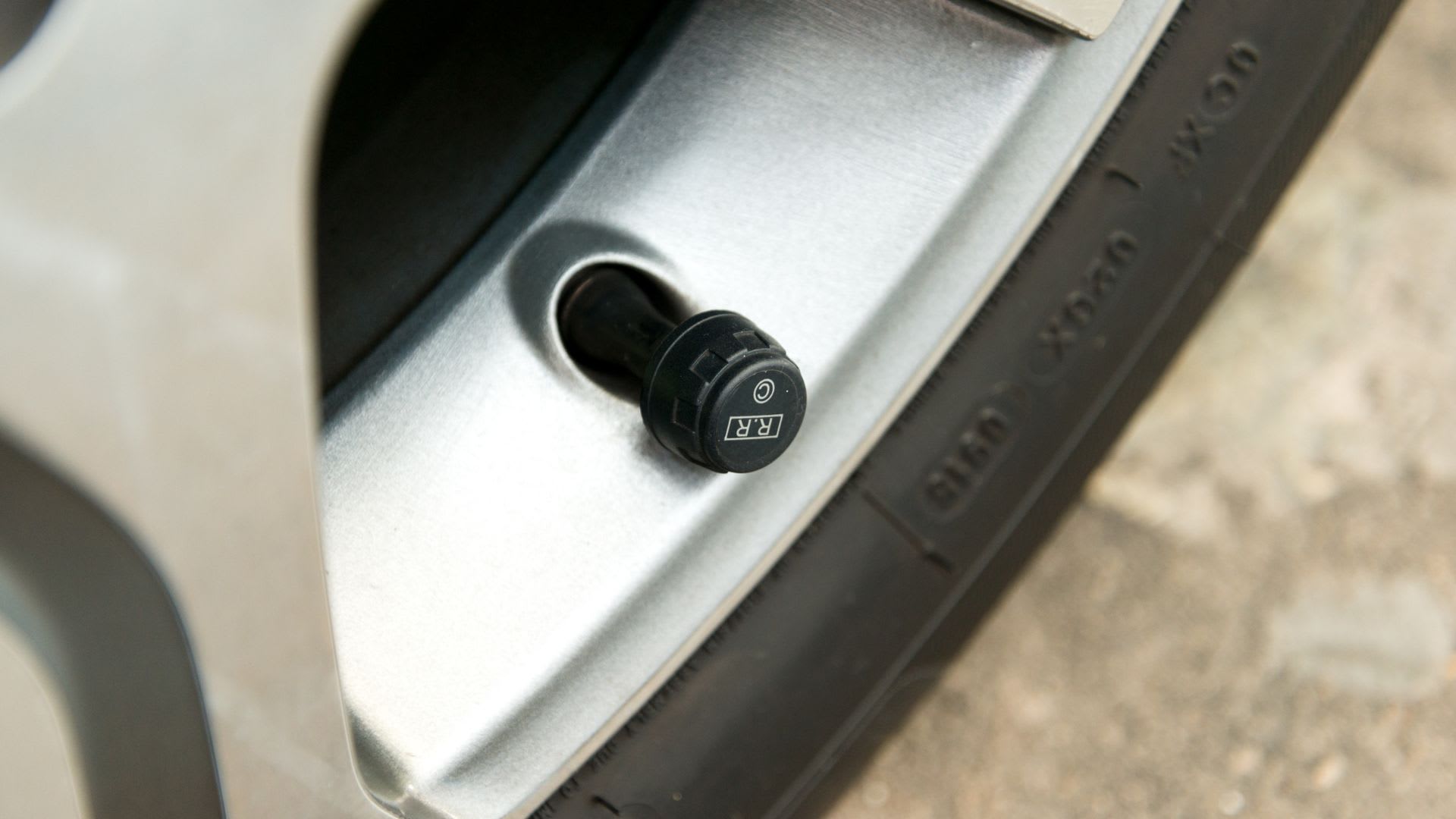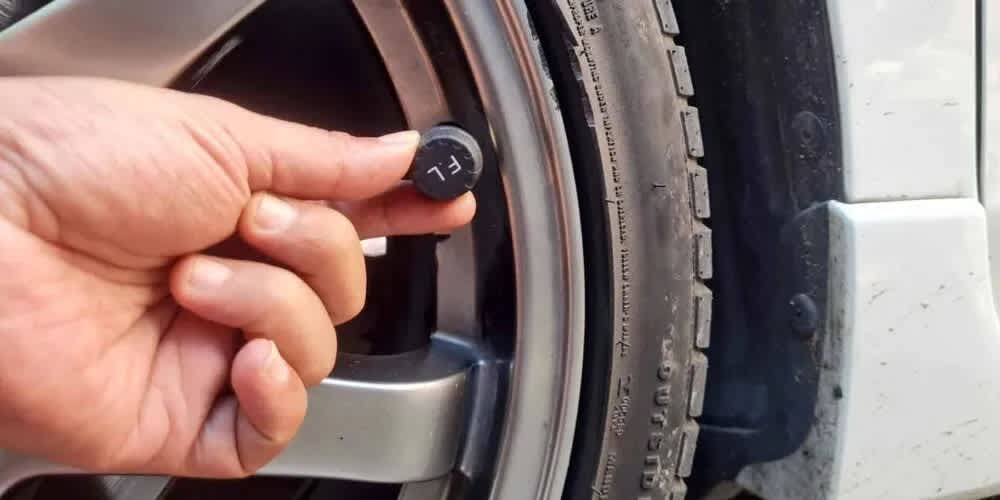Tire Maintenance & Safety
Free shipping
Best price guarantee
Special pricing
Financing with Resolve
Easy returns

Tire pressure is a critical aspect of vehicle safety and performance that is often overlooked by drivers. Maintaining proper tire pressure not only helps improve fuel efficiency and extend tire life but also plays a crucial role in ensuring a safe and comfortable driving experience.
To address this important issue, modern vehicles are equipped with tire pressure monitoring systems (TPMS) that continuously monitor the air pressure inside each tire. These advanced systems provide real-time information to the driver, alerting them when tire pressure falls outside the recommended range.
By understanding how TPMS works and the benefits it offers, drivers can take proactive steps to maintain optimal tire pressure and enhance overall vehicle safety. In this article, we will explore the key components of TPMS, its role in preventing tire-related issues, and the importance of regular tire pressure checks and maintenance.
What is a Tire Pressure Monitoring System (TPMS)?
A tire pressure monitoring system (TPMS) is an electronic system designed to continuously monitor the air pressure inside a vehicle's tires. Its primary purpose is to provide real-time information about tire pressure, enabling drivers to take prompt action if any issues arise.
TPMS consists of three main components that work together seamlessly:
- Tire Pressure Sensors: These small electronic devices are mounted inside each tire or attached to the valve stem. They continuously measure both the air pressure and temperature within the tire, wirelessly transmitting this data to the TPMS control module for real-time monitoring.
- TPMS Control Module: Acting as the brain of the system, the control module receives data from the tire pressure sensors, processes it, and checks if any tire's pressure falls outside the manufacturer's recommended range. If a discrepancy is detected, the control module triggers a warning signal to inform the driver.
- Receiver/Display Unit: Integrated into the vehicle's instrument cluster or dashboard display, the receiver/display unit receives warning signals from the TPMS control module. It presents tire pressure information and alerts in an easily understandable format, ensuring the driver is always aware of their tires' condition.
By constantly monitoring tire pressure and providing early warnings when issues arise, TPMS helps drivers maintain optimal tire pressure for improved safety, fuel efficiency, and tire longevity. This advanced technology has become a standard feature in most modern vehicles, offering peace of mind and convenience to drivers who value a hassle-free tire maintenance experience, such as the customers served by SimpleTire.
The Dangers of Driving with Incorrect Tire Pressure
Operating a vehicle with incorrect tire pressure introduces several risks that can undermine safety and vehicle performance. Tires that lack sufficient air pressure endure increased stress, leading to premature wear and diminished longevity. This condition heightens rolling resistance, causing the vehicle to expend more energy—resulting in lower fuel economy. Furthermore, insufficient tire pressure affects how a vehicle handles and brakes, reducing the driver's ability to maintain control, particularly in challenging conditions.
On the other hand, when tires are overinflated, they create another set of challenges. Excessive air pressure reduces the tire's contact area with the road, causing uneven tread wear and diminishing traction. This makes the vehicle less stable and increases the likelihood of slipping or skidding, especially on wet or slippery roads. Overinflated tires are also more vulnerable to damage from everyday road hazards like potholes, which can lead to sudden blowouts or other hazardous situations.
Ensuring that tires are inflated to the recommended pressure is crucial for maintaining vehicle safety and performance. Proper inflation helps tires wear evenly, extends their lifespan, and ensures the best possible contact with the road. Utilizing a dependable TPMS allows drivers to steer clear of the hazards associated with incorrect tire pressure, contributing to a safer and more efficient driving experience.
Key Components of a TPMS
The effectiveness of a tire pressure monitoring system (TPMS) hinges on its well-coordinated components, each playing a pivotal role in safeguarding tire health. At the forefront are the tire pressure sensors, which serve as vigilant sentinels inside each tire. These sensors, crucial for monitoring tire conditions, are integral to the system's functionality.
Tire Pressure Sensors
These sensors are sophisticated devices placed within the tire's structure or attached to the valve stem. They perform the critical task of monitoring both the tire's air pressure and temperature, ensuring any deviation is promptly noted. By gathering data continuously, these sensors provide essential information that supports proactive tire maintenance. The information they collect is then transmitted to the TPMS control module, ensuring that the system remains up-to-date on tire conditions.
TPMS Control Module
Functioning as the central hub of the system, the control module interprets the data received from the pressure sensors. It meticulously analyzes this data to identify any irregularities in tire pressure. Upon detecting a variance from the recommended pressure levels, the module activates a warning mechanism. This alert system is essential for notifying the driver about potential issues, enabling timely interventions to maintain tire safety.
Receiver/Display Unit
This component is designed to communicate crucial information about tire conditions directly to the driver. Situated within the vehicle's dashboard or instrument panel, it translates technical data into user-friendly alerts and displays. By providing clear and concise information on tire pressures and potential issues, the receiver/display unit empowers drivers to take informed actions to ensure their vehicle's safety and performance.
How TPMS Helps Prevent Tire-Related Issues
Tire pressure monitoring systems (TPMS) serve as a crucial safeguard against tire-related problems. By keeping a constant check on tire pressure, TPMS provides valuable alerts when pressure drops below the recommended levels. This timely information allows drivers to address potential issues swiftly, preventing minor discrepancies from escalating into major concerns.
Optimal tire pressure is key to a vehicle's efficiency and longevity. Proper inflation decreases rolling resistance, which in turn boosts fuel efficiency and reduces the frequency of fuel stops. Additionally, maintaining the correct tire pressure ensures even tread wear, extending the life of the tires and enhancing overall driving comfort and control.
Safety is significantly enhanced with the help of TPMS by minimizing the chances of unexpected tire failures. Maintaining the recommended pressure levels reduces the risk of blowouts, which can be particularly dangerous at higher speeds. This system ensures that vehicles operate with maximum stability and traction, providing drivers with greater confidence and security on the roads.
The Importance of Regular Tire Pressure Checks and Maintenance
While tire pressure monitoring systems (TPMS) offer critical insights into tire health, they should work alongside—not replace—traditional manual checks. Manual inspections are essential for identifying subtle pressure changes or potential issues that TPMS might miss, such as slow leaks or problems with the valve stems and rims. Conducting these checks ensures that each tire maintains its ideal pressure, which supports fuel efficiency and enhances vehicle performance.
Beyond fuel savings and extended tire life, routine tire maintenance is crucial for spotting potential issues early. Regular inspections allow drivers to detect irregular wear patterns, foreign objects, or sidewall damage that could escalate into serious problems if ignored. Such proactive measures help avert unexpected breakdowns, keeping the vehicle reliable and safe on the road.
Making a habit of frequent tire pressure checks and maintenance fosters a greater awareness of your vehicle's condition. By paying close attention to your tires, you can mitigate risks, optimize driving performance, and prolong the life of your tires. This routine care not only protects your investment in your vehicle but also ensures a smoother and safer driving experience.
Troubleshooting Common TPMS Issues
Even with their advanced technology, tire pressure monitoring systems (TPMS) can encounter problems that may disrupt their function. Recognizing these issues early helps maintain the system's reliability and ensures it continues to deliver accurate tire pressure data.
Sensor Malfunctions
Challenges with TPMS often begin with sensor malfunctions. These can occur due to physical impacts or wear over time, leading to inaccurate data transmission or a complete loss of communication. Such malfunctions can leave drivers unaware of critical tire pressure changes, potentially compromising safety. Regular inspections and timely replacements of faulty sensors are essential to keep the system operating smoothly.
Calibration Challenges
Calibration issues can lead to incorrect tire pressure readings. These inaccuracies might stem from outdated software or misaligned sensors, causing the system to misreport pressure levels. Ensuring proper sensor alignment and regular software updates are effective strategies to prevent these errors, maintaining accurate monitoring of tire conditions.
Addressing False Alerts
False alerts may arise if sensors are not correctly calibrated or experience interference. These unwarranted warnings can create unnecessary concerns for drivers. Consulting with a skilled technician to recalibrate the system can resolve these false alerts, ensuring that the TPMS provides dependable information and enhances overall driving safety.
How to Maintain Your TPMS for Optimal Performance

Ensuring your tire pressure monitoring system (TPMS) operates effectively involves regular careful maintenance. Begin by checking each sensor to ensure they remain firmly attached to the tires. This straightforward measure helps avoid sensor detachment, which could lead to inaccurate readings. Address any loose or damaged sensors promptly to uphold the system's accuracy and reliability.
Battery maintenance is equally important, as sensor batteries have a limited lifespan. Regularly evaluating battery levels and replacing them when necessary ensures sensors continue to relay accurate data to the control module. Staying proactive with battery updates minimizes the risk of unexpected failures, preserving the system's continuous monitoring capabilities.
Routine calibration and software updates play a crucial role in TPMS performance. Calibration aligns sensor data for precision, while software updates can enhance system features and fix glitches. After tire changes or rotations, resetting and recalibrating the TPMS is essential to reflect new sensor positions correctly. By following these steps, you ensure the system remains reliable, offering precise tire pressure readings and supporting vehicle safety.
By understanding the importance of tire pressure monitoring systems and maintaining them properly, you can ensure a safer, more efficient, and more comfortable driving experience. At SimpleTire, we are committed to helping you find the perfect tires for your vehicle at the best possible prices. Shop for tires online and let us help you keep your wheels on the road with confidence.
Ready to find the perfect tires?
Search By